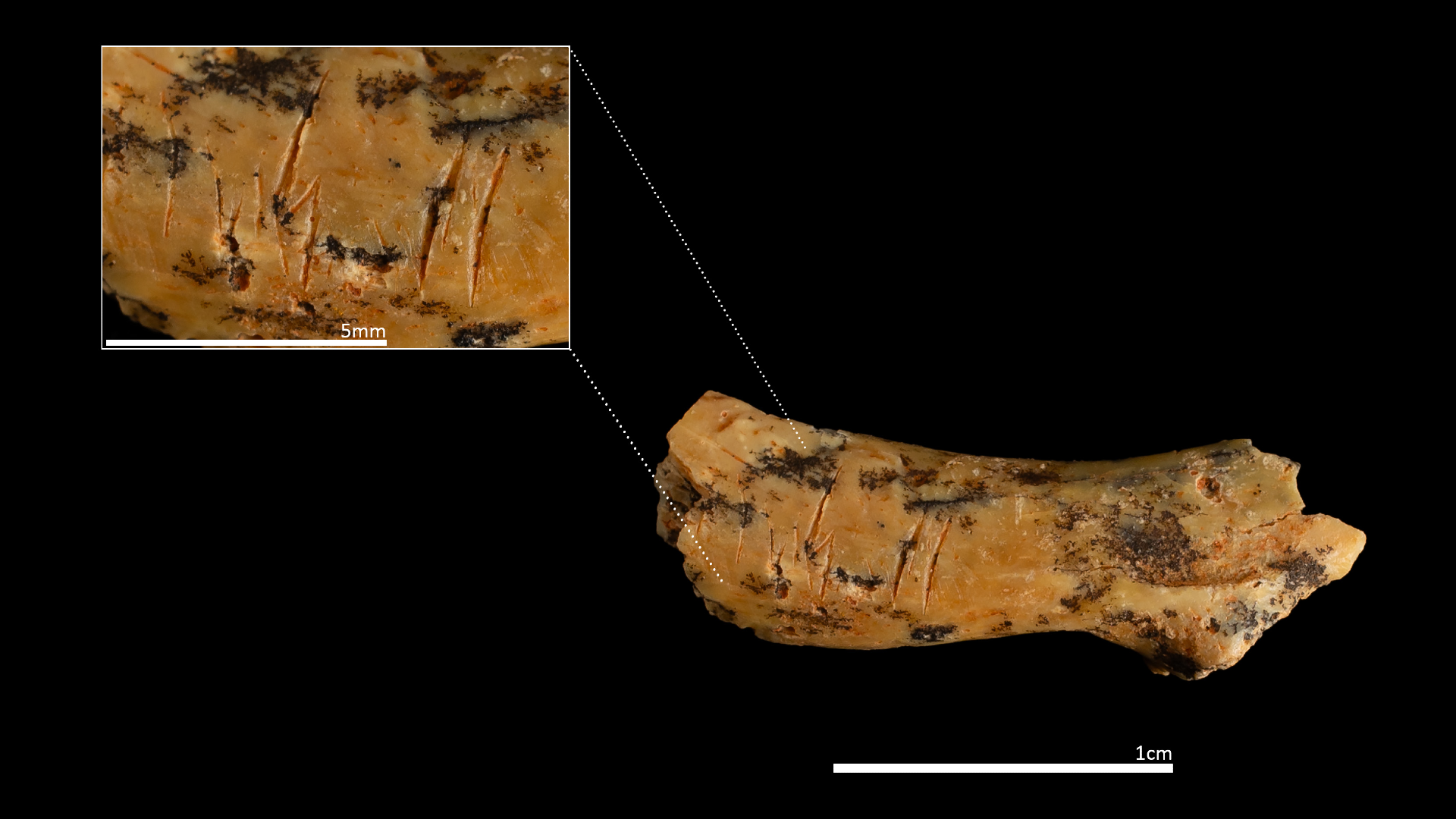Ancient Human Cannibalism: New Evidence and Ethical Implications

Introduction
The discovery of cut marks on a child's cervical vertebra, dating back 850,000 years, at the Atapuerca site in Spain has shed new light on the hunting and eating habits of our ancient human relative, Homo antecessor.
Key Details
The study of the vertebra revealed that the child, estimated to be around 3 years old, was most likely a victim of cannibalism by Homo antecessor. This finding challenges previous beliefs that cannibalism was a rare occurrence in ancient humans. Researchers suggest that the child may have been killed and consumed as part of a ritual or for survival purposes.
Impact
These findings suggest that Homo antecessor was indiscriminate about its cannibalistic practices, targeting not only adults but also children. This adds to the growing evidence of the complex social behavior and cultural practices of early humans. It also raises questions about the ethical implications of studying and interpreting evidence of cannibalism in the ancient world.
About the Organizations Mentioned
Atapuerca site
## Overview of the Atapuerca Site Organization The Atapuerca site, formally known as the Sierra de Atapuerca archaeological complex, is not a conventional business or technology organization, but a world-renowned scientific and cultural entity dedicated to the excavation, study, and dissemination of some of the oldest and most significant evidence of human evolution in Europe. Located in the province of Burgos, northern Spain, the site is managed by a consortium of research institutions, including the Atapuerca Research Team and the IPHES (Catalan Institute of Human Paleoecology and Social Evolution), with ongoing involvement from the University of Burgos and other academic bodies[4]. The site was declared a UNESCO World Heritage Site in 2000, recognizing its outstanding universal value to humanity[1][2]. ## History and Discovery The archaeological significance of Atapuerca was revealed in the early 20th century during the construction of a railway, which exposed deep limestone caves rich in fossils and artifacts[1][4]. Systematic excavations began in the 1960s, but the site gained international prominence under the leadership of Emiliano Aguirre (1978–1990) and later a team including Eudald Carbonell, José María Bermúdez de Castro, and Juan Luis Arsuaga[1]. Continuous interdisciplinary research has documented human occupation spanning over 1.2 million years, from the Lower Pleistocene to the Holocene, making it one of the most complete records of human evolution in Europe[2][4]. ## Key Achievements Atapuerca is celebrated for several groundbreaking discoveries: - **Oldest European Hominids**: Fossils from Gran Dolina cave represent Homo antecessor, dating back 800,000–950,000 years, the oldest known human species in Western Europe[1][3]. - **Sima de los Huesos**: The "Pit of Bones" contains the world’
World Health Organization
The World Health Organization (WHO) is a specialized agency of the United Nations, established in 1948, with a mandate to promote global health, coordinate international responses to public health threats, and set standards for health policies and interventions[2]. Headquartered in Geneva, Switzerland, WHO operates in over 150 countries, working with governments, NGOs, and other partners to advance health equity, strengthen health systems, and respond to health emergencies. ## What WHO Does WHO’s core activities include monitoring global health trends, setting international health standards, providing technical assistance to countries, and serving as a forum for scientific and policy discussions on health issues[2]. The organization publishes influential reports such as the annual **World Health Statistics**, which tracks progress toward Sustainable Development Goals (SDGs) and provides a global “health report card”[1][8]. WHO also maintains the Model List of Essential Medicines, guiding countries on which drugs are most critical for public health[7]. In addition, WHO leads global campaigns on issues ranging from infectious disease eradication to noncommunicable diseases (NCDs), maternal and child health, and health emergencies[2][6]. ## History and Key Achievements WHO’s history is marked by landmark achievements, including the eradication of smallpox, near-eradication of polio, and the development of an Ebola vaccine[2]. The organization played a pivotal role in responding to the COVID-19 pandemic, coordinating global research, vaccine distribution, and public health guidance. In May 2025, WHO member states adopted the world’s first **Pandemic Agreement**, a historic step to improve international coordination and equity in future health crises[4]. WHO also spearheads initiatives like the Triple Billion Targets (healthier lives, universal health coverage, and protection from health emergencies) and technical policy packages targeting tobacco, alcohol, salt, and trans fat reduction[1][2]. ## Current Status and Notable Aspects WHO is currently implementing its **Fou








